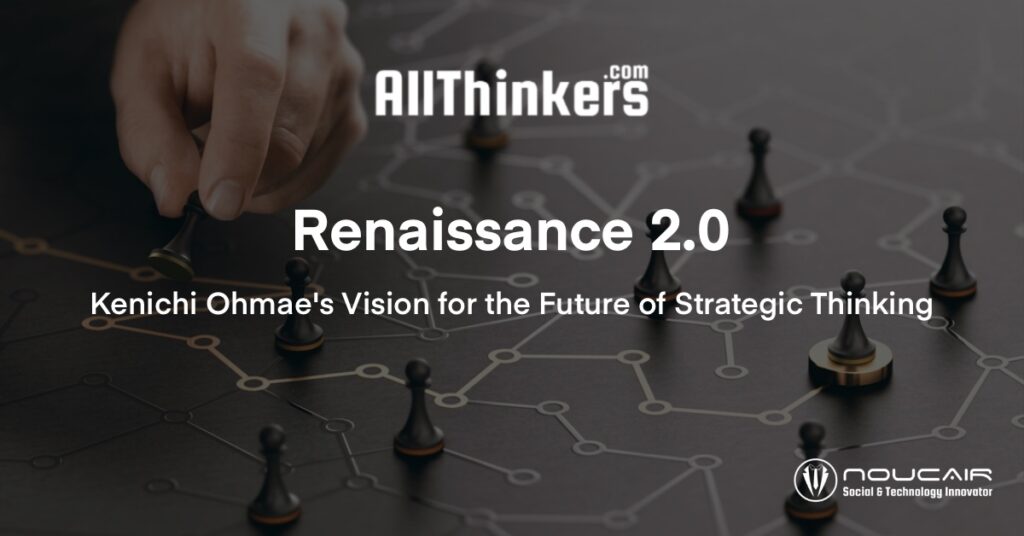Strategy Renaissance 2.0: Kenichi Ohmae’s Vision for the Future of Strategic Thinking
The world is changing faster than ever. Technological advancements, geopolitical shifts, and evolving consumer behaviors are creating a complex and unpredictable landscape for businesses and organizations. In this era of disruption, strategic thinking is no longer a luxury—it’s a necessity. Kenichi Ohmae, a leading authority on strategic thinking, has long emphasized the importance of a holistic and adaptable approach to strategy. His insights, developed over decades of experience, are more relevant than ever as we navigate the challenges and opportunities of the 21st century. This article explores how Ohmae’s principles are not just relevant, but essential for a “Strategy Renaissance” in 2025 and beyond.
The Strategic Triangle: A Timeless Framework for a Changing World
Ohmae’s strategic triangle—customer, competition, and corporation—provides a fundamental framework for understanding the interplay of forces that shape strategic decisions. In the hyper-connected world of 2025 and beyond, this framework becomes even more critical.
- The Evolving Customer: Customers are no longer passive recipients of marketing messages. They are active participants in the marketplace, armed with information and empowered by choice. Understanding their evolving needs and preferences requires sophisticated data analytics, social listening, and a deep understanding of cultural nuances. Ohmae’s emphasis on customer-centricity becomes paramount as businesses strive to personalize offerings and build lasting relationships in a fragmented market.
- The Dynamic Competitive Landscape: Competition is no longer confined by geographical borders or traditional industry boundaries. New players emerge from unexpected corners of the globe, driven by technological disruption and innovative business models. Competitive advantage rests not on static assets, but on agility, adaptability, and the ability to leverage data and technology. Ohmae’s focus on understanding the competitive landscape is crucial for navigating this dynamic environment.
- The Adaptive Corporation: Organizations must be more flexible, collaborative, and purpose-driven than ever before. Hierarchical structures give way to agile teams, and siloed departments are replaced by cross-functional collaboration. A culture of innovation and employee empowerment becomes essential. Ohmae’s emphasis on developing strategic thinking skills within organizations becomes the key to building the adaptive capacity needed to thrive in the future.
Global Strategy in an Interconnected World
Ohmae’s insights on global strategy are particularly prescient for the coming years. Businesses operate in an increasingly interconnected world, where borders are less relevant and global partnerships are essential. Understanding diverse cultures, navigating geopolitical risks, and adapting strategies to local contexts are crucial for success. Ohmae’s work provides a framework for businesses to think strategically about their global footprint and leverage global opportunities. This includes understanding local market dynamics, adapting products and services to local needs, and building strong relationships with local partners.
The Strategic Thinker in the Age of AI
As artificial intelligence takes over routine tasks, the role of human strategists will evolve. Human strategists will need to focus on higher-level thinking, including creativity, intuition, and ethical considerations. They will need to be able to work effectively with AI, using it as a tool to augment their own strategic thinking. Ohmae’s emphasis on developing “the mind of the strategist” – the ability to analyze complex situations, identify patterns, and formulate innovative solutions – will be more crucial than ever in the age of AI. This includes developing skills in critical thinking, systems thinking, and scenario planning.
The Strategy Renaissance: Embracing the Future of Strategic Thinking
Kenichi Ohmae’s principles provide a robust foundation for a “Strategy Renaissance” in 2025 and beyond. Businesses and organizations that embrace a customer-centric, globally-minded, and strategically agile approach will be the ones that thrive. They will be the ones that can navigate the complexities of the 21st century and create value in a rapidly changing world. By embracing Ohmae’s insights, future strategists can be prepared to tackle the challenges and seize the opportunities that lie ahead. This “Strategy Renaissance” will be characterized by:
- Data-Driven Decision Making: Leveraging data analytics and AI to gain deep insights into customer behavior, competitive dynamics, and market trends.
- Agile Strategy Development: Adopting iterative and adaptive approaches to strategy formulation and execution.
- Collaborative Innovation: Fostering cross-functional collaboration and open innovation to generate new ideas and solutions.
- Purpose-Driven Strategy: Aligning business goals with social and environmental impact to create long-term value.
Kenichi Ohmae’s legacy is not just about frameworks and models; it’s about fostering a mindset of strategic thinking. It’s about empowering individuals and organizations to anticipate change, adapt to disruption, and create a future where innovation and strategic thinking drive progress. The “Strategy Renaissance” is not just about surviving the future; it’s about shaping it.


